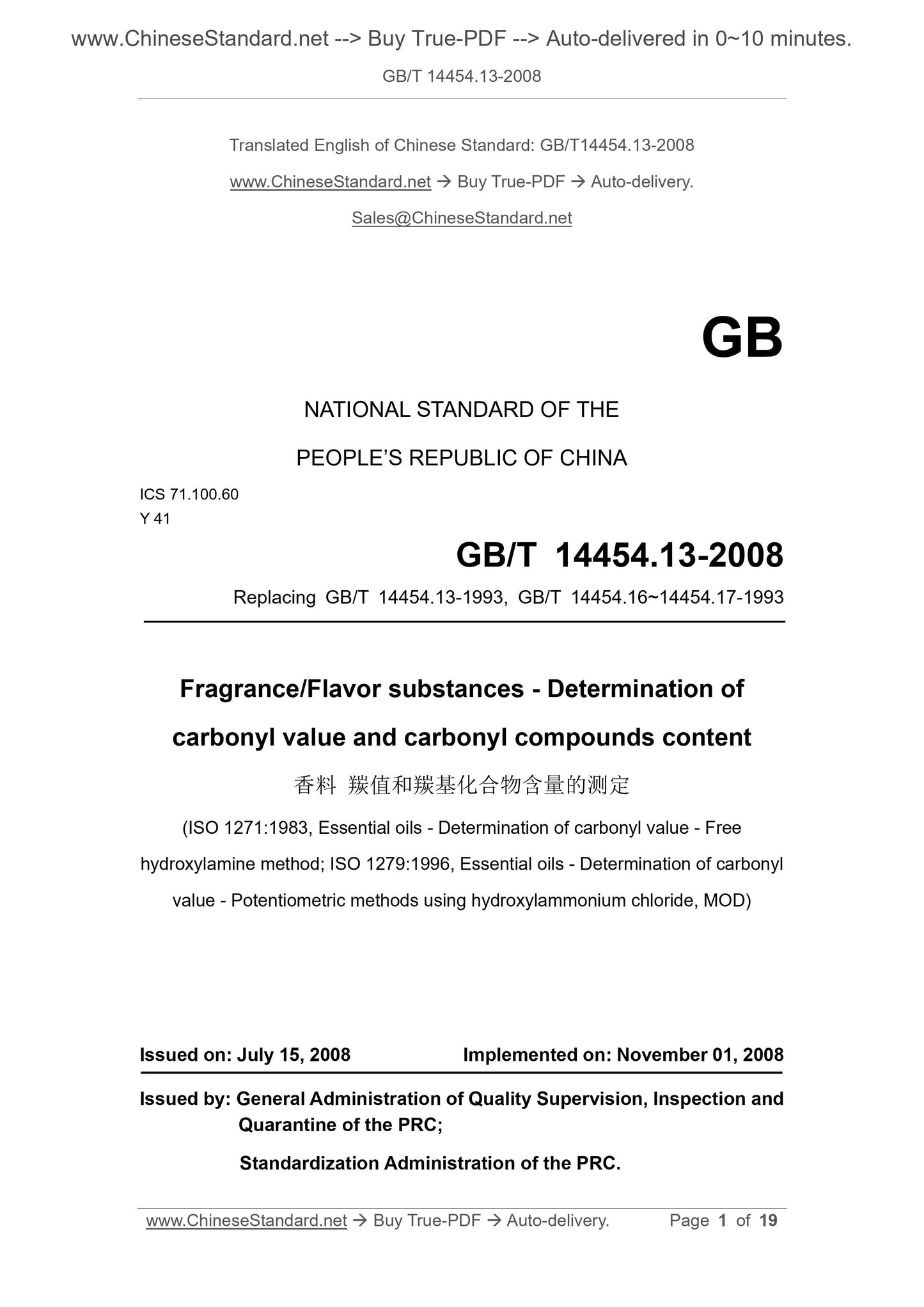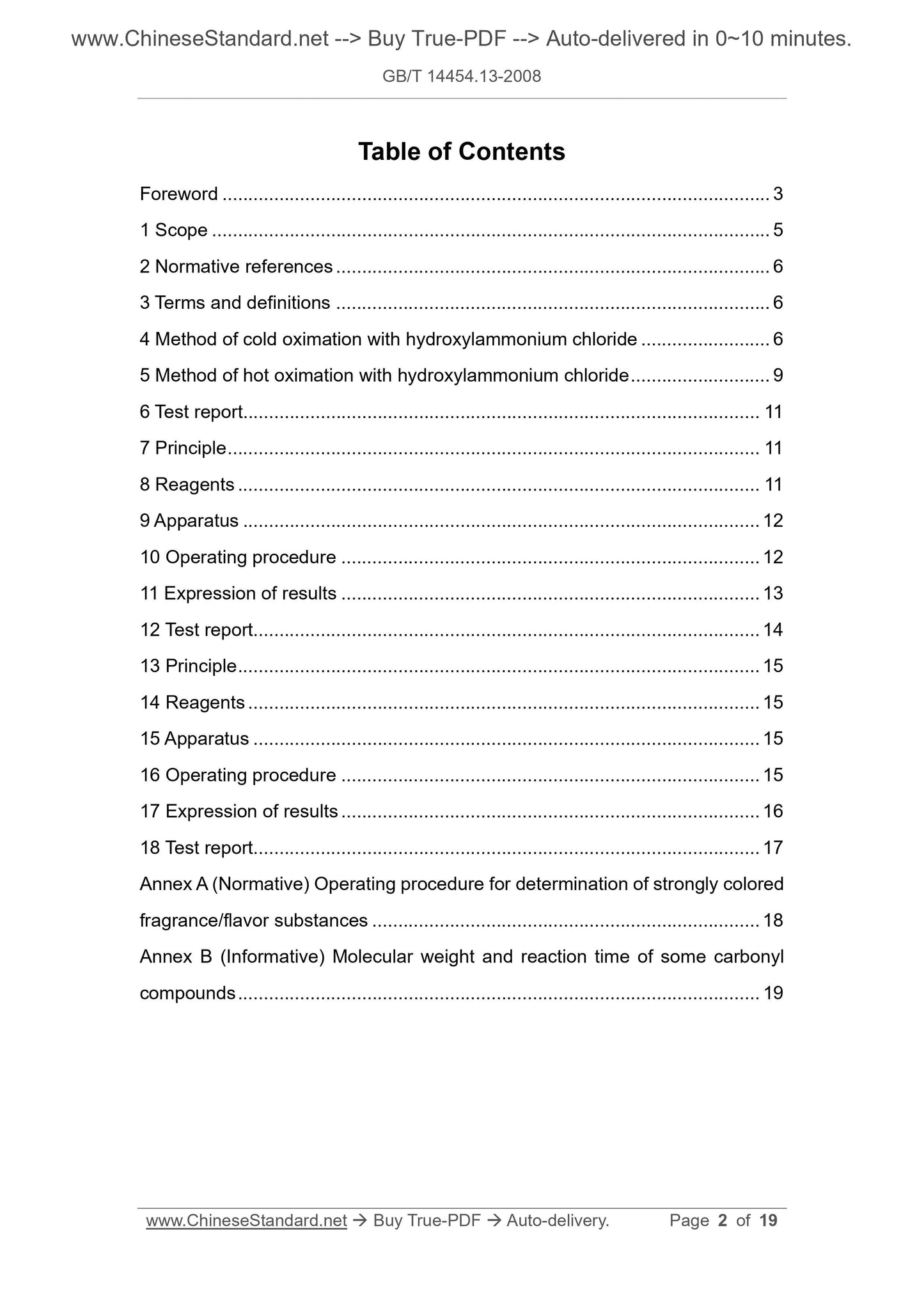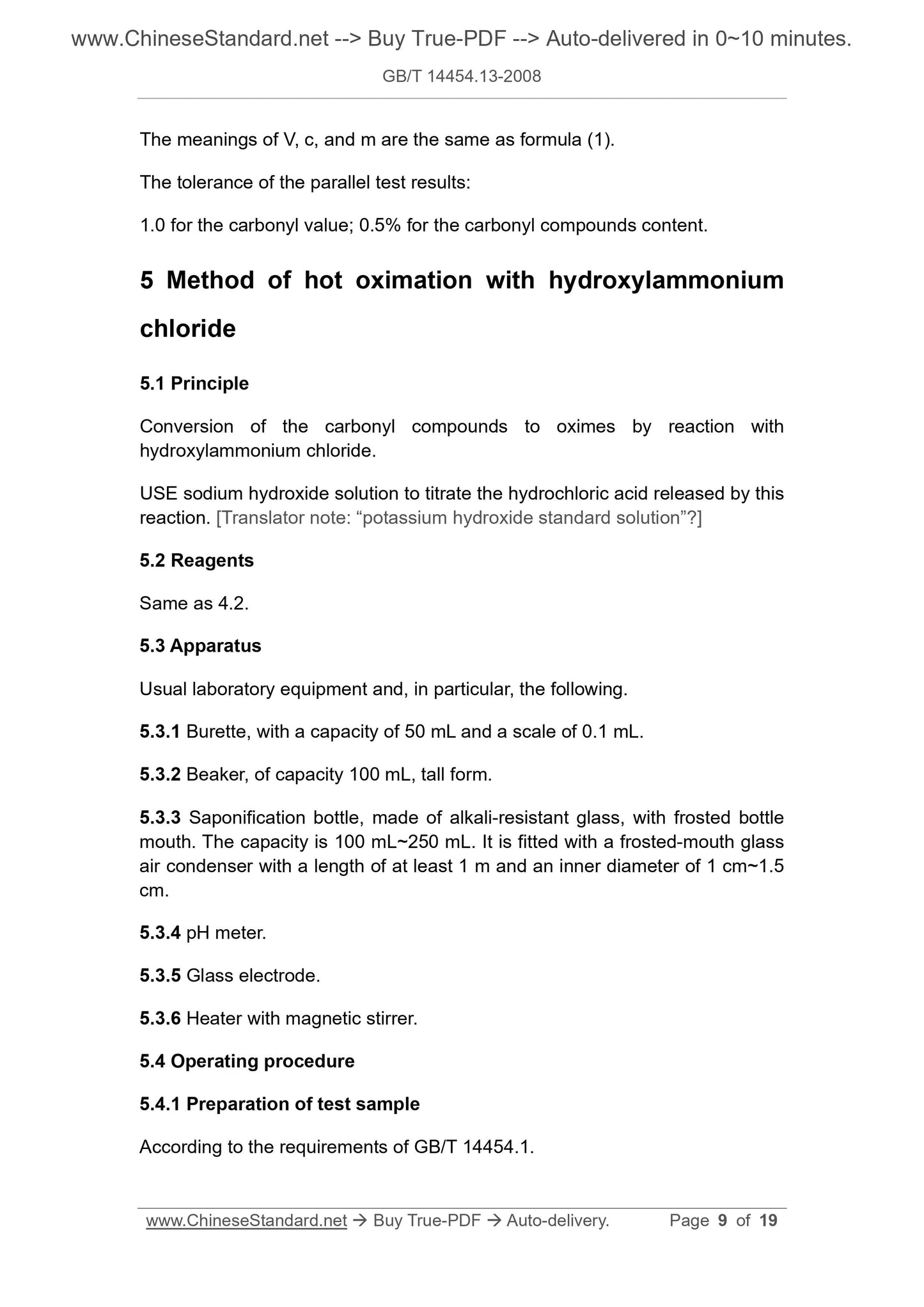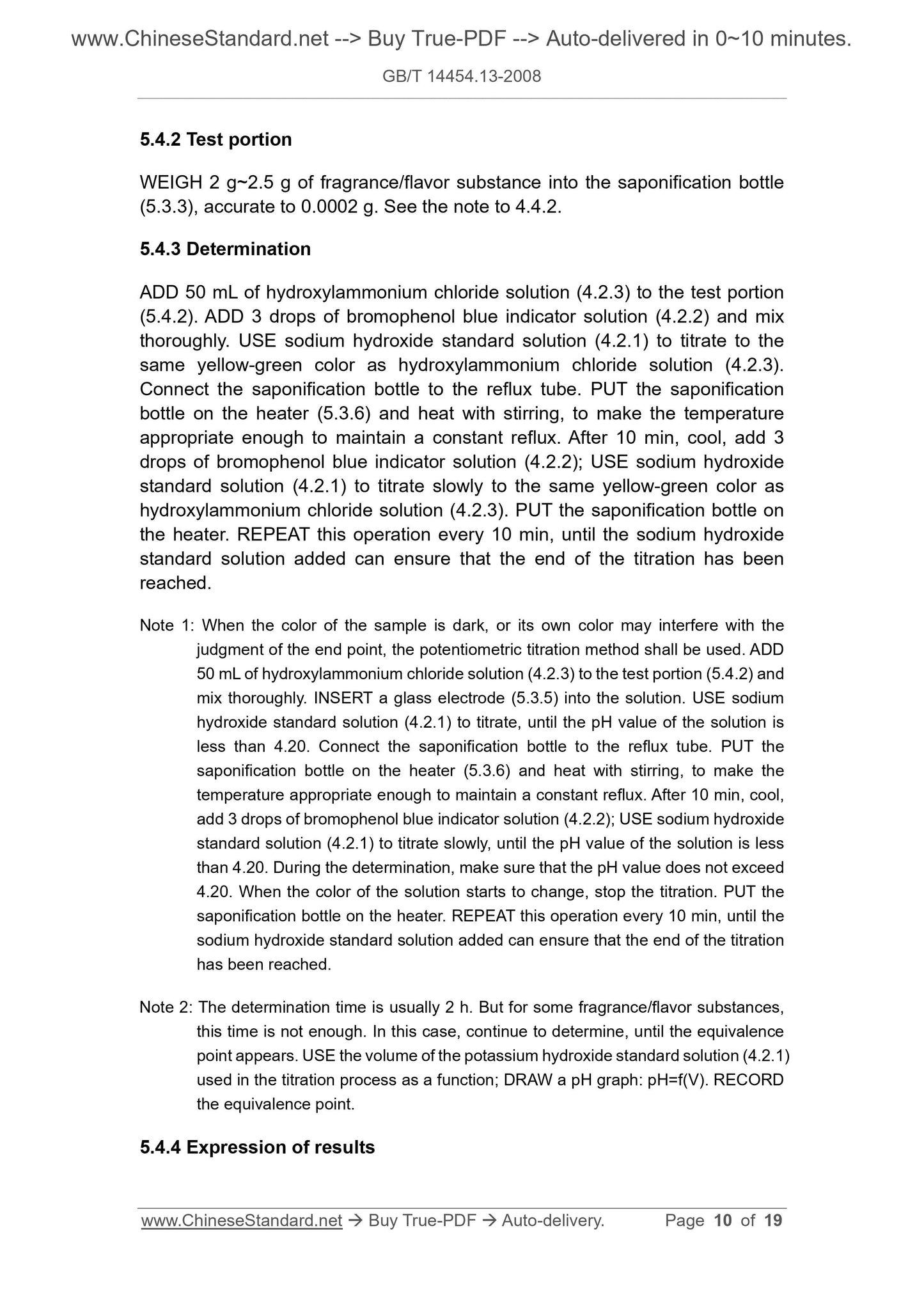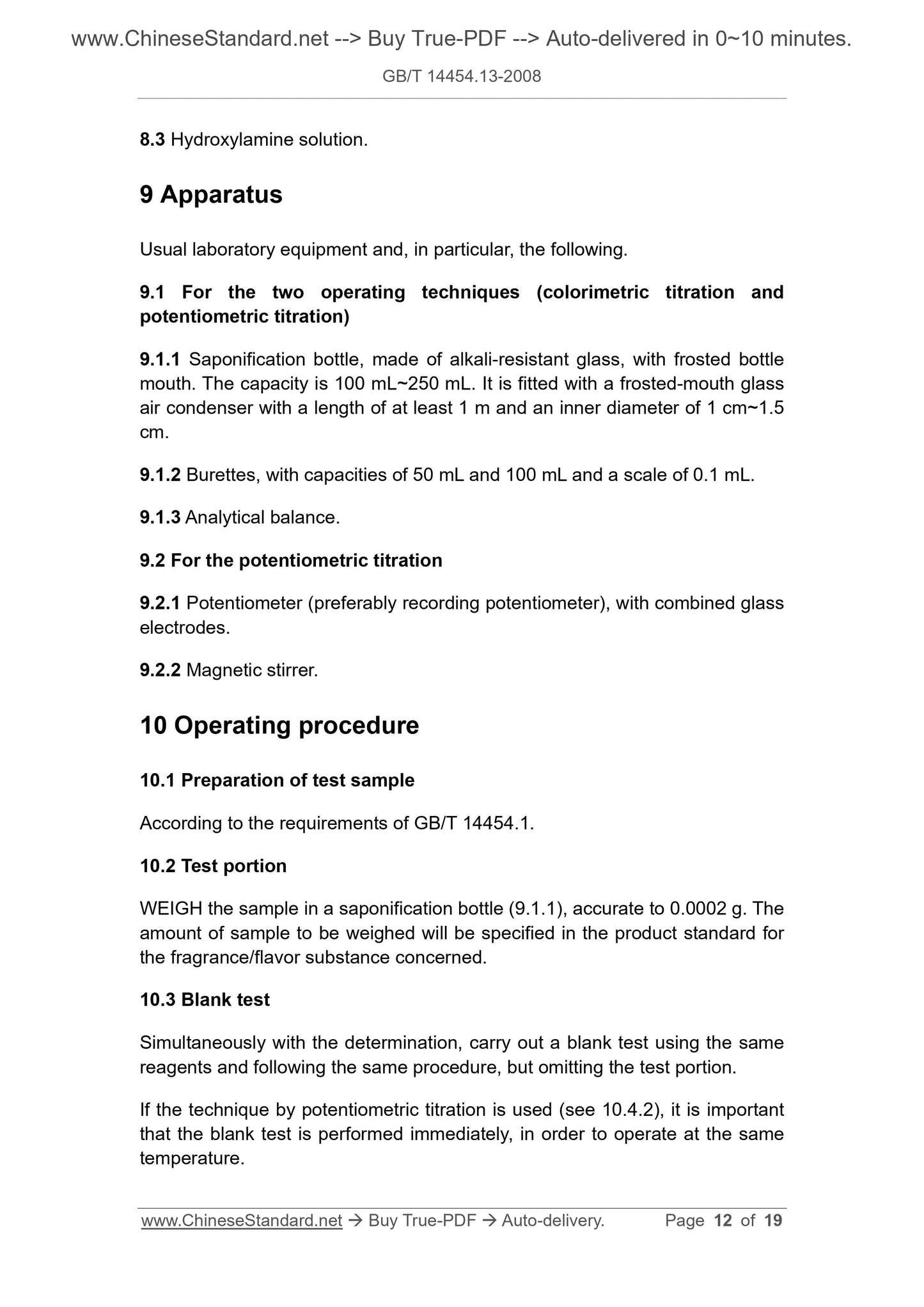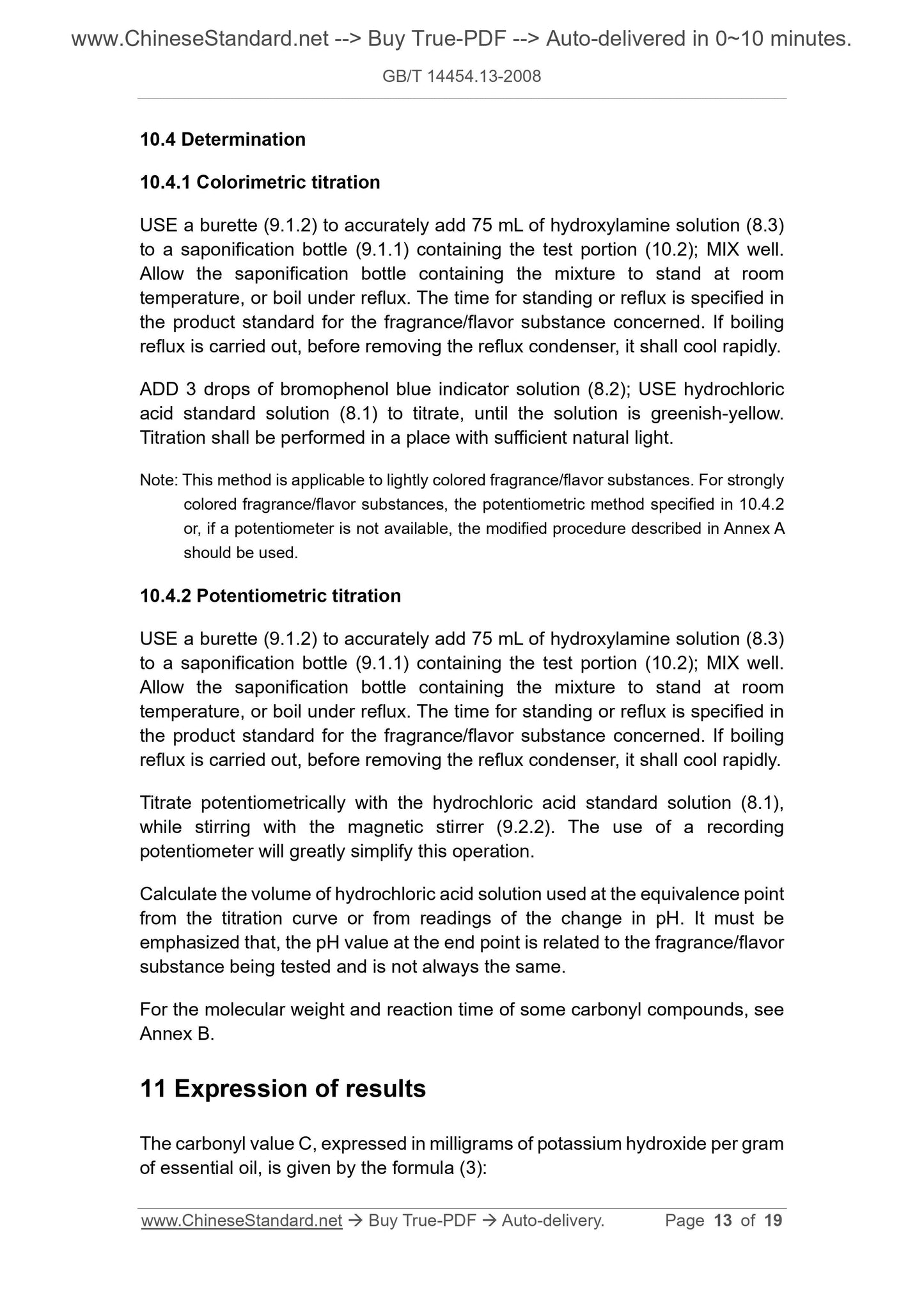1
/
of
10
www.ChineseStandard.us -- Field Test Asia Pte. Ltd.
GB/T 14454.13-2008 English PDF (GB/T14454.13-2008)
GB/T 14454.13-2008 English PDF (GB/T14454.13-2008)
Regular price
$190.00
Regular price
Sale price
$190.00
Unit price
/
per
Shipping calculated at checkout.
Couldn't load pickup availability
GB/T 14454.13-2008: Fragrance/Flavor substances -- Determination of carbonyl value and carbonyl compounds content
Delivery: 9 seconds. Download (and Email) true-PDF + Invoice.Get Quotation: Click GB/T 14454.13-2008 (Self-service in 1-minute)
Newer / historical versions: GB/T 14454.13-2008
Preview True-PDF
Scope
Method I of this Part of GB/T 14454 specifies the method for determination ofthe carbonyl value of essential oils and the carbonyl compounds content in
isolated and synthetic fragrance/flavor substances using hydroxylammonium
chloride.
A cold oximation reaction with hydroxylammonium chloride of this method
applies to fragrance/flavor substances whose main constituents are easily
oximable aldehydes and ketones, with the exception of citronellal which needs
a low temperature to avoid cyclization phenomena and acetalization. A hot
oximation reaction with hydroxylammonium chloride applies to fragrance/flavor
substances whose main constituents are ketones which are in general oximable
only with difficulty.
Note 1: For the determination of essential oil containing citronellal, use free hydroxylamine
method. See Method II.
Note 2: Examples of essential oils concerned containing oximable aldehydes or ketones
are lemongrass, hesperydus and rue oils.
Note 3: Examples of essential oils concerned are vetiver, Dalmation sage and white
artemisia oils which contain methylketones oximable only with difficulty.
Method II of this Part of GB/T 14454 specifies the method for determination of
the carbonyl value of essential oils and the carbonyl compounds content in
isolated and synthetic fragrance/flavor substances using free hydroxylamine
method.
This method applies to fragrance/flavor substances which contain carbonyl
compounds (especially ketones, excluding methylketones) which are difficult to
convert to oximes by the method specified in Method I. The method is not
applicable to fragrance/flavor substances which contain substantial amounts of
esters or other alkali-sensitive constituents.
Method III of this Part of GB/T 14454 specifies the method for determination of
the carbonyl compounds content in fragrance/flavor substances using the
neutral sodium sulfite method. It is applicable to the determination of the content
of carbonyl compounds in aldehyde and certain ketone fragrance/flavor
Conversion of the carbonyl compounds to oximes by reaction with
hydroxylammonium chloride.
USE sodium hydroxide standard solution to titrate the hydrochloric acid
released by this reaction. [Translator note: “potassium hydroxide standard
solution”?]
4.2 Reagents
The reagents used are all analytically pure reagents. The water is distilled water
or water of equivalent purity. Unless otherwise specified, the preparation
method shall be carried out in accordance with GB/T 14454.14.
4.2.1 Sodium hydroxide standard solution, c(KOH)=0.5 mol/L.
4.2.2 Bromophenol blue indicator solution.
4.2.3 Hydroxylammonium chloride solution.
4.3 Apparatus
Usual laboratory equipment and, in particular, the following.
4.3.1 Beaker, of capacity 100 mL, tall form.
4.3.2 Conical flask, of capacity 250 mL.
4.3.3 pH meter.
4.3.4 Glass electrode.
4.3.5 Burette, with a capacity of 50 mL and a scale of 0.1 mL.
4.4 Operating procedure
4.4.1 Preparation of test sample
According to the requirements of GB/T 14454.1.
4.4.2 Test portion
WEIGH 1 g~1.5 g of fragrance/flavor substance in a tall-form beaker (4.3.1) or
conical flask (4.3.2), accurate to 0.0002 g.
Note: If the test sample should be larger, this will be stated in the appropriate product
standard for the fragrance/flavor substance concerned.
4.4.3 Determination
The meanings of V, c, and m are the same as formula (1).
The tolerance of the parallel test results:
1.0 for the carbonyl value; 0.5% for the carbonyl compounds content.
Basic Data
| Standard ID | GB/T 14454.13-2008 (GB/T14454.13-2008) |
| Description (Translated English) | Fragrance/Flavor substances -- Determination of carbonyl value and carbonyl compounds content |
| Sector / Industry | National Standard (Recommended) |
| Classification of Chinese Standard | Y41 |
| Classification of International Standard | 71.100.60 |
| Word Count Estimation | 12,195 |
| Date of Issue | 2008-07-15 |
| Date of Implementation | 2008-11-01 |
| Older Standard (superseded by this standard) | GB/T 14454.13-1993; GB/T 14454.16-1993; GB/T 14454.17-1993 |
| Quoted Standard | GB/T 14454.1; GB/T 14454.14 |
| Adopted Standard | ISO 1271-1983, MOD; ISO 1279-1996, MOD |
| Regulation (derived from) | National Standard Approval Announcement 2008 No.12 (Total No.125) |
| Issuing agency(ies) | General Administration of Quality Supervision, Inspection and Quarantine of the People's Republic of China, Standardization Administration of the People's Republic of China |
| Summary | This standard specifies the method for determining the value of oil and one- off and carbonyl compounds carbonyl content of synthetic fragrances with hydroxylamine hydrochloride method. The method of cooling method using hydroxylamine hydrochloride method is applicable to an oxime of the main components of the oxime easily perfume aldehydes or ketones (except citronellal, citronellal cyclization need to avoid hypothermia and acetals phenomenon). Oxime with hydroxylamine hydrochloride method of heat applied to the main components of the method is generally difficult to oximation of ketones perfume. |
Share
